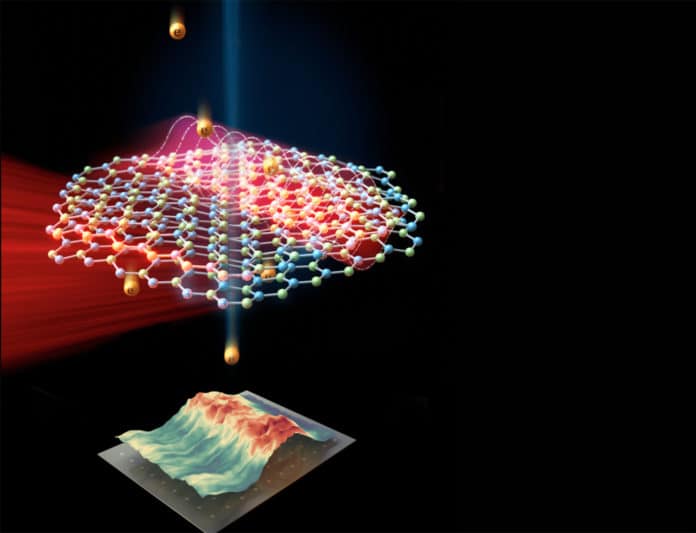In space, light travels at a speed of 300,000 km/s. It slows down by a fraction while traveling through water or glass. But when moving through certain few-layers solids, light slows down almost a thousand-fold.
This happens because the passing light creates vibrations in materials that then generate sound waves. These atomic sound waves create light when they vibrate. Thus, the pulse is a tightly bound combination of sound and light, called “phonon-polariton.”
Now, for the first time, scientists show how pulses of light move inside 2D material. Scientists from the Technion—Israel Institute of Technology have recorded combined sound and light waves in atomically thin materials.
For this work, scientists used an ultrafast transmission electron microscope (UTEM) that allowed them to track the sound-light wave in unprecedented resolution, both in space and in time. The time resolution is 50 femtosecond—50X10-15 seconds—the number of frames per second is similar to the number of seconds in a million years.
Scientists shone light pulses along the edge of a 2D material. The light produced the hybrid sound-light waves. Scientists recorded these pulses and also found that pulses can spontaneously speed up and slow down. Surprisingly, the waves even split into two separate pulses, moving at different speeds.
Kurman explained, “The hybrid wave moves inside the material, so you cannot observe it using a regular optical microscope. Most light measurements in 2D materials are based on microscopy techniques that use needle-like objects that scan over the surface point-by-point. Still, every such needle contact disturbs the movement of the wave we try to image. In contrast, our new technique can image the motion of light without disturbing it. Our results could not have been achieved using existing methods. So, in addition to our scientific findings, we present a previously unseen measurement technique that will be relevant to many more scientific discoveries.”
Professor Ido Kaminer of the Andrew and Erna Viterbi Faculty of Electrical & Computer Engineering and the Solid State Institute said, “While this is a fundamental science study, the scientists expect it to have multiple research and industry applications. We can use the system to study different physical phenomena that are not otherwise accessible. We are planning experiments that will measure light, experiments in chaos theory, and simulations of phenomena that occur near black holes. Moreover, our findings may permit the production of atomically thin fiber-optic “cables,” which could be placed within electrical circuits and transmit data without overheating the system. This task is currently facing considerable challenges due to circuit minimization.”
Professor Harald Giessen from the University of Stuttgart said, “I was thrilled by these findings. This presents a real breakthrough in ultrafast nano-optics and represents a state-of-the-art and leading-edge scientific frontier. The observation in real space and in real-time is beautiful and has, to my knowledge, not been demonstrated before.”
Journal Reference:
- Yaniv Kurman et al., Spatiotemporal imaging of 2D polariton wave packet dynamics using free electrons, Science (2021). DOI: 10.1126/science.abg9015
